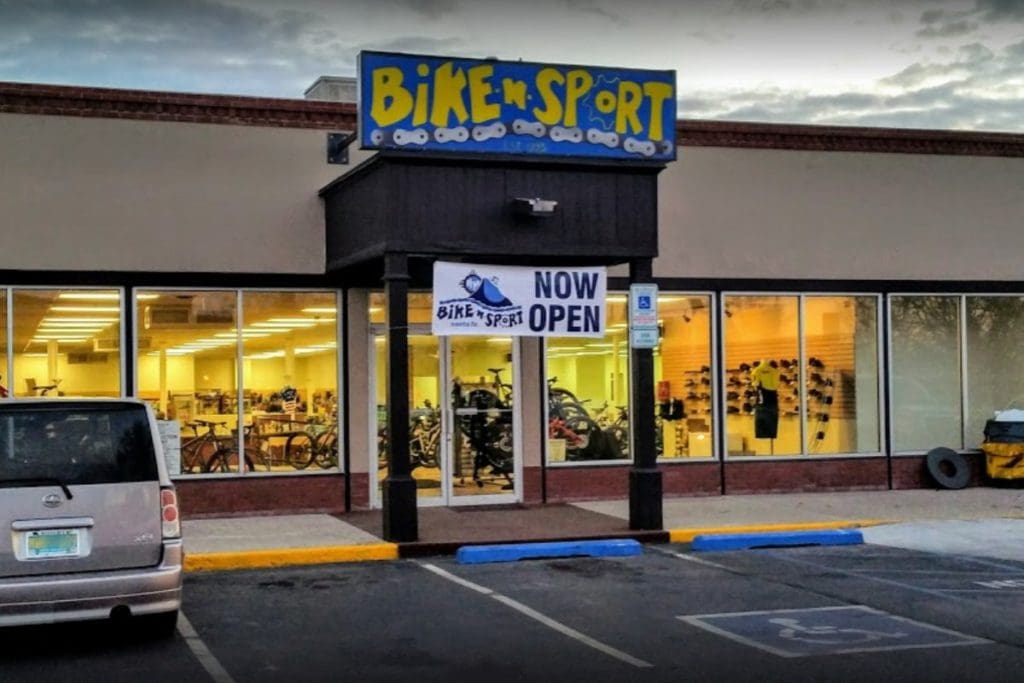America’s Bike Sales Boom Continues… For Now

By Marc Sani
The other day I walked into Bike’n Sport for a quick visit with its owner, Tony Farrar. As I paused to look around his showroom I was stunned at the number of empty hooks—usually filled with new bicycles. On the other hand, his repair bay hooks were filled. As Tony walked over to say hi, face mask in place, I noted the number of empty hooks. He chuckled and said he’d just taken delivery on 35 bikes courtesy of UPS. And just in time.
Tony founded Bike’n Sport 25 years ago with only $2,000 in his pocket and a degree in economics. He’s now the only Specialized dealer in town but carries other brands ranging from Cannondale to Scott and a slap-dash mix of Norcos and Pinarellos. But a quick look at what’s up front, near the door, tells the story—a half-dozen or so Specialized e-bikes ranging from the Turbo Levo mountain bike to the Turbo Vado, a hybrid commuter.
E-bike sales, coupled with the ongoing pandemic, have spurred business; e-bikes, in particular, are flying out his front door. The cheapest I spotted was a Vado with a sticker price of US$2,750 (A$3,822).

That day, Farrar said he had helped several customers roll their new e-bikes out to their cars generating sales of some $20,000 (A$27,800). Not bad given where bicycle sales were in March—mostly in the toilet. No question, between the pandemic, consumer desire to get outdoors, and a surge in e-bike sales, Farrar and most U.S. dealers are getting a significant economic boost in what is an increasingly perilous U.S. economy.
But I had one question for Farrar—when will sales fall off the cliff? “I don’t know, but I worry about that a lot,” he said. And so are others. While dealers are jubilant—at the moment—over current sales they are quietly concerned over the future. They note that the U.S. economy is in recession, a bruising presidential election is on tap for November, and the Trump Administration has failed to contain and control COVID-19; there appears to be no end in sight to its current fumbling of the pandemic. This a problem. But first, let’s look at some current numbers.
In the first seven months of this year, wholesale dollars on complete bike sales through dealers as measured by industry analysts NPD, topped $1.1 billion (A$1,52 billion)—that’s a staggering 49.2 % increase over last year. Just in the month of July, dealer unit sales were up 37.3% to $154.8 million (A$215 million) compared to July of 2019. Turning to units delivered through July, wholesalers shipped 1,428,677 units compared to 1,111,150 last year in the same time period. That’s a whopping 28.6% increase year-over-year. As for July, dealers took in shipments of 226,554 units—a substantial 18.5% hike.
E-bikes also posted some astounding numbers. Wholesalers delivered 102,617 units in seven months, an 85.2 percent increase compared to what now looks like a miserly 45,866 units in 2019. Revenue spiked as well, up 139% to $252.7 million (A$351 million) compared to 2019. As for July alone, wholesalers saw revenue rise 123% to $39.1 million (A$54.3 million); that clearly reflects what Farrar is seeing at his store as well as dealers elsewhere across the U.S. Other bright spots include hybrid and fitness categories as well as full-suspension 29ers.
(A caveat: these number do not include online sales.)
Ironically, consumers at the moment seem to be paying more for higher end bikes. In part, that’s because there were fewer lower priced models available. There is some new demand as some consumers realize they may be working from home longer than anticipated. And these new consumers are most likely better educated, generally enjoy higher incomes, and have a job. I might argue that it’s unlikely this cohort of buyers will become steady customers in the future.
Still, it’s the economy, stupid. Consider this: Too many Americans check the stock market every day. Wow! The market is back and the economy is on a roll. Not so fast. Dig deep into various financial reports and you discover the other America. Layoffs in many industries are accelerating, new job hires are declining, shopping is weakening and investments are declining. Congress and the White House can’t move a stimulus bill to prop up the unemployed and evictions are rising. The unemployment rate for those with unemployment insurance is 10.2% or about 14.8 million people, while another 28.1 million are claiming some sort of state or federal benefit thanks to the pandemic. The economy will struggle until COVID-19 is cornered.
We all remember the phrase, ‘A rising tide lifts all boats.’ That works in reverse as well. A receding tide leaves those boats stranded on rocks. And for bicycle dealers that’s the rub. It’s unlikely sales can continue at the current pace. In fact, many acknowledge that dealers have pulled normal sales forward while adding sales from those who may have never thought of buying a bike. Until now. And suppliers—as you would expect—are pushing dealers to order up even as supply chain shifts continue working out the kinks. And too many dealers can’t survive based on a repair economy.
Fall (autumn) is fast approaching. Sales will soon stall as winter weather takes hold in a few months. That’s normal. The real concerns are: What will America look like in spring? Will COVID-19 be under control? Will more Americans go back to work? Will consumers have money to spend? And for dealers, a more pointed question: Will they have money to spend on bikes? Or have they already spent it?
